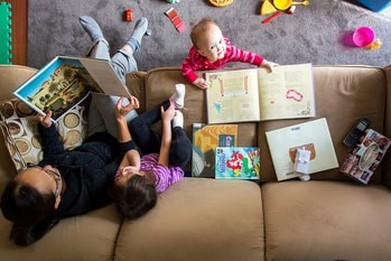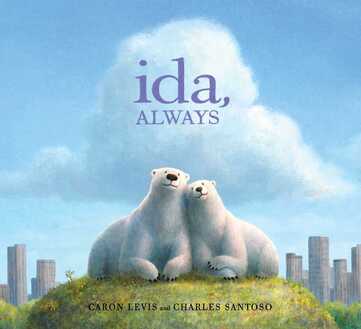A Book Review of ida, ALWAYS
This book was inspired by a true story of a real polar bear friendship at the Central Park Zoo in New York City. ida ALWAYS presents love and loss in a deeply touching and insightful manner. It taps deep into the human (and bear) experience of connection and the deep feelings that illness and death elicit in all of us. Ms. Levis describes intense sensory experiences of sounds, sights, touch, smells and taste to gently, but deeply, address the human emotion. They are successful in explaining death and dying in a clear, matter of fact way rather than resorting to abstract concepts that confuse children further. The use of sensory experiences, along with a well done, age-appropriate explanation of death and dying sets this book apart from other books on loss. It is a true lesson for adults to understand the importance of informing and including children in the process of death of a loved one or their own impending death. As adults, our knee-jerk response in dealing with a child's experience of the death and dying of a loved one, or their own impending death is to shield them from it. After all, our role as parents, teachers, family members is to protect children. Shouldn't we then continue this role when it comes to death and dying? One of the most difficult things in this world is seeing a child in pain, whether it be physical or emotional. It's easier for us to pretend with the child and give them false hope. However, the reality is that in trying to protect the child, as adults we are actually causing the child to feel more pain in the long run. We must allow our children to feel and understand throughout the process. We cannot protect our kids from the realities of life. We can offer them age-appropriate, clear explanations that make life less mysterious and less scary. We can prepare them intellectually and emotionally. Even though they will go through the pain, as we do as adults, they will have the opportunity to express their strong feelings throughout the process and begin to grieve. They will feel safe asking questions and expressing their love to their loved ones in their last precious days together. This book is an excellent way to start this conversation. Gus and Ida, the bear friends in the story, are granted the opportunity to feel. The very caring and compassionate zookeeper, Sonya, does a beautiful job explaining Ida's illness and impending death to Gus in a gentle but straightforward manner. The story moves forward with Gus and Ida expressing their very strong feelings together. They show their anger at the situation by growling, howling, stomping and snarling together. They express their sadness together and the unknown and the wonderings of what will be. Through Charles Santoso's beautiful illustrations, you can feel the deep connection between the bears and the intense feelings they experience. The story oozes with compassion and empathy through all of the characters. Gus's knowledge of Ida's impending death allows him to be part of the care-taking process. He is able to do what he can to help care for her in the last days of her life. This care-taking process is crucial and helps tremendously with our feelings of helplessness in the situation. As I remember back to the deaths of my grandparents and parents, a very warm memory that I carry with me, is the small things I was able to do that made me feel like I was playing a role in helping them feel comfortable in their dying moments. The story goes on to show the transition of Gus's life after Ida's death. The sadness shown through Gus's character allows the readers to sit with the sadness. The quote in the book that feels the most important to me is "You don't have to see it to feel it." This quote has a double meaning in the story describing the sensory experiences of the bustling city around them, in addition to Gus's ability to feel Ida with him after her death. I highly recommend this book for children, and adults, who are experiencing any loss, especially one through illness or their own impending death. I have included an activity below to help personalize this grieving process for the child. Activity Idea for ida, ALWAYSA very useful exercise to assist with grieving is to write a letter to the loved one that has passed. This can be done repeatedly to express feelings, things remembered and missed, and as a way to feel you are updating them with ongoing life. I have composed a letter template that can be completed through writing or drawing or both, that can be used with your child, client or student to assist them through the grieving process. The template focuses on the ideas expressed in the book. It might be very helpful to first have the child answer the questions as Gus might answer them if he was writing a letter to Ida. Then, they can personalize to themselves. I recommend encouraging children to draw pictures for the loved one. This has the added benefit of providing the child with expressing these thoughts and memories through the sensory experience of drawing and coloring, which is therapeutic in itself. This letter likely will need to be done over several sessions as to not be overwhelming. Younger children may need reminders of some of their memories and more prompting. The letter ideas are written below and I have included a link to a printable pdf file with room for pictures below. Dear_________________________, 1. I remember when we: 2. When you were sick, it was so sad when: it was so scary when: 3. I wish we could have: 4. You made me laugh when: 5. I liked helping you with: 6. The things I miss the most about you are: 7. These are the things I hear, see, taste, smell, touch, that remind me of you: Love, _________________
2 Comments
|
Follow me on Twitter, Pinterest and LinkedIn
Categories
All
|
||||||||

 RSS Feed
RSS Feed
